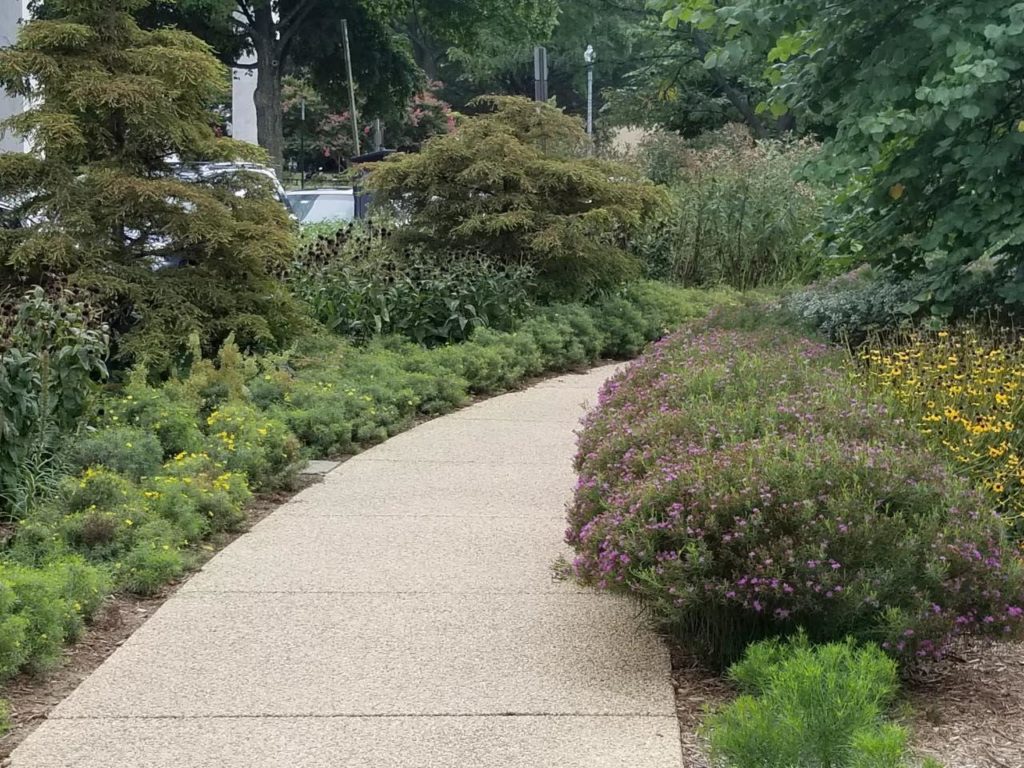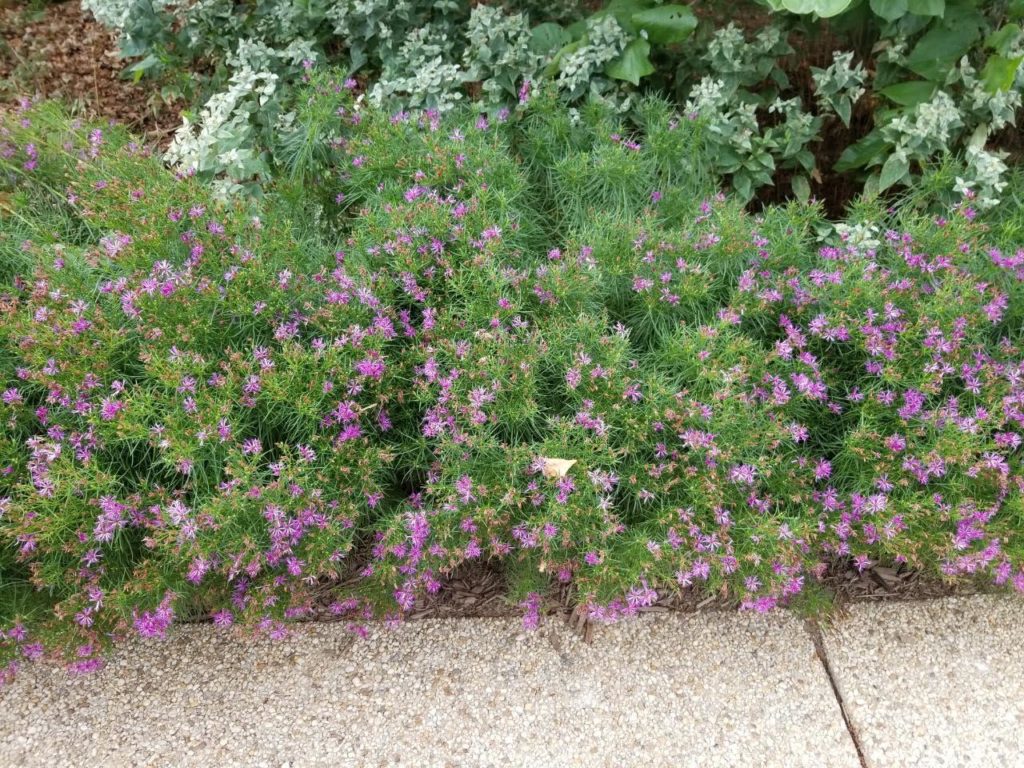‘Iron Butterfly’ Ironweed For Your Pollinator Garden

Now that I have retired from Behnke’s, I find that I have more time to get out and about and see plants in the landscape. One that caught my eye recently is Vernonia ‘Iron Butterfly’ which is a selection of a short ironweed native to Arkansas and Oklahoma. (Lettermann’s Ironweed, Vernonia lettermannii.) I first saw it in the summer of 2008 in a trial garden at North Creek Nurseries, a wholesale grower in Pennsylvania. It wasn’t in bloom yet but I was struck by how full the plant was and the fresh green color of the foliage. There is a nice description of Iron Butterfly on the website of New Moon Nursery, another wholesale grower in New Jersey. When Behnke’s was growing many of our own perennials for our retail garden centers, North Creek and New Moon were both important suppliers of perennial starter plants in our growing program.
If you are familiar with ironweed at all, it’s probably New York Ironweed, Vernonia noveboracensis. Which is hard to spell. It’s native to most of the east coast, growing in low areas with ample moisture. It has purple blooms in late summer and it’s tall—up to eight feet, which makes it a little hard to place in most gardens. We had it planted out at Behnke’s in both the Pollinator Garden and the Rain Garden. Although it prefers moist soil, it tolerated drying out without complaint. It seeds out, perhaps more than you would like, and the seedlings root deeply and are hard to pull out. Goldfinches and other seed-eating birds do like to visit these plants though, so it would be a shame to deadhead.
We stocked both of these ironweeds at Behnke’s when we could find them, and neither sold very well. The New York ironweed is sort of “meh” in a pot, which is typical of tall perennials. People just don’t know ‘Iron Butterfly’ very well. I think now that ‘Iron Butterfly’ is becoming more prevalent in landscapes, interest will pick up. It’s a very nice late summer bloomer, and keeps a nice shape, almost looking sheared. You can see it at the gardens at the Smithsonian National Air and Space Museum, under the care of former Behnke employee Alex Dencker. It’s also used to great effect as an informal edging plant at Earth Day Park, a nice native-plant garden at 9th and Independence in D.C. This is where the photos are from. They are past peak bloom for the year.

Pollinators are fond of both of the ironweeds, so expect lots of butterflies and other pollinators to be checking them out. Because of its size, ‘Iron Butterfly’ is easier for folks to use, it’s drought-tolerant, and gives a blast of late summer color. To me, it’s reminiscent of low asters but more graceful, or a chubby blazing star (Liatris). Look for it next time you are at your favorite independent garden center.

~Larry Hurley, Retired Behnke’s Horticulturist

Comments (0)